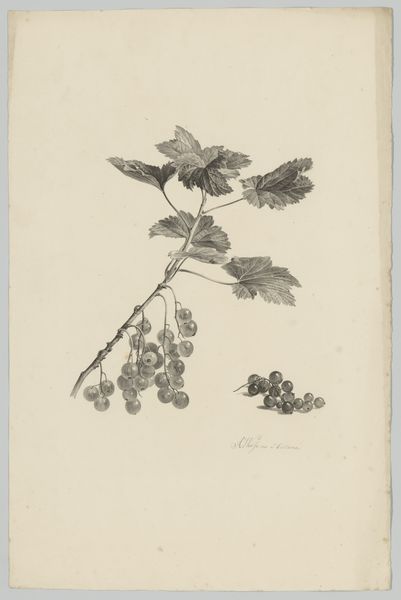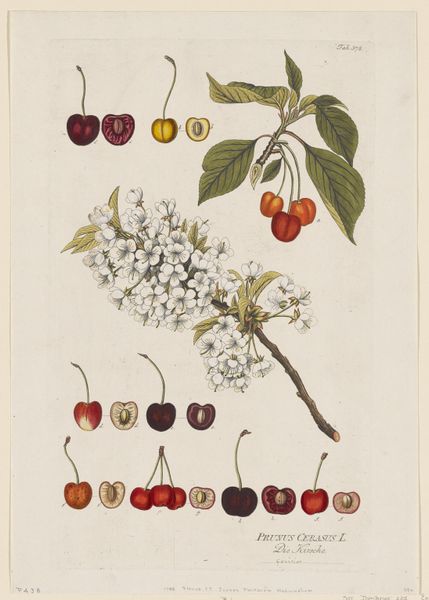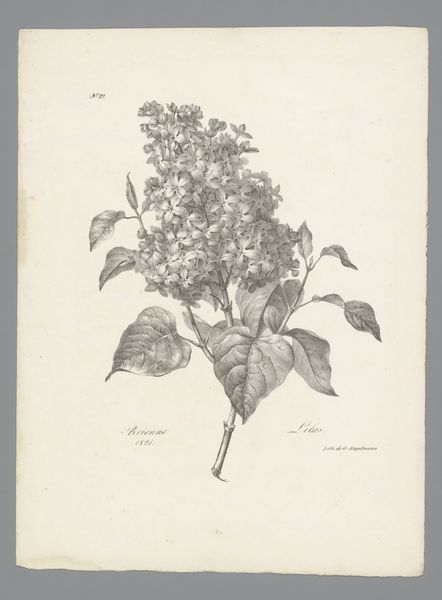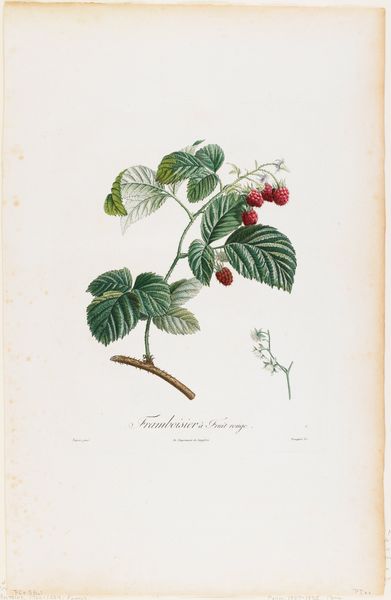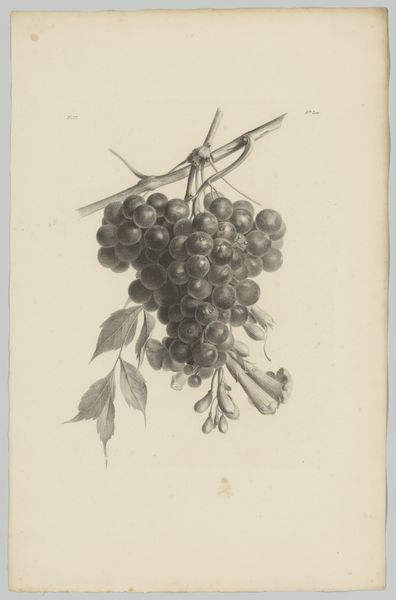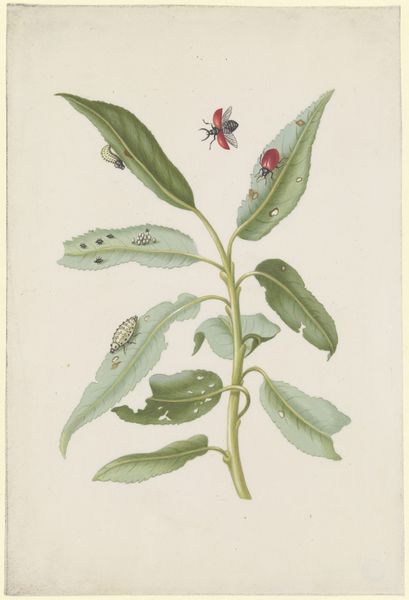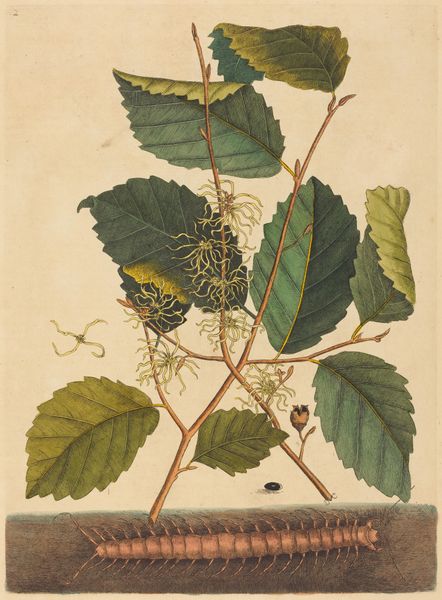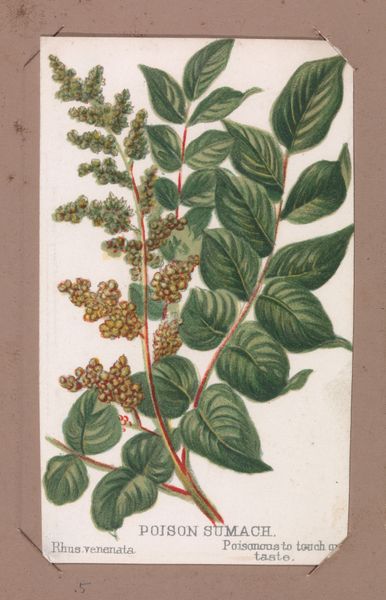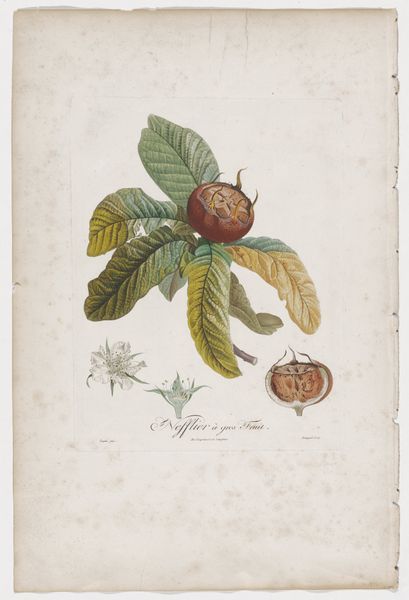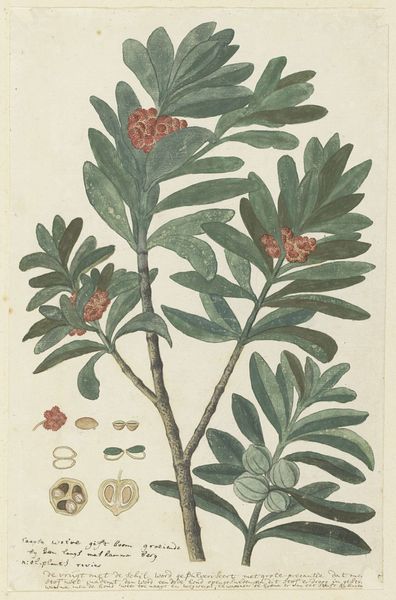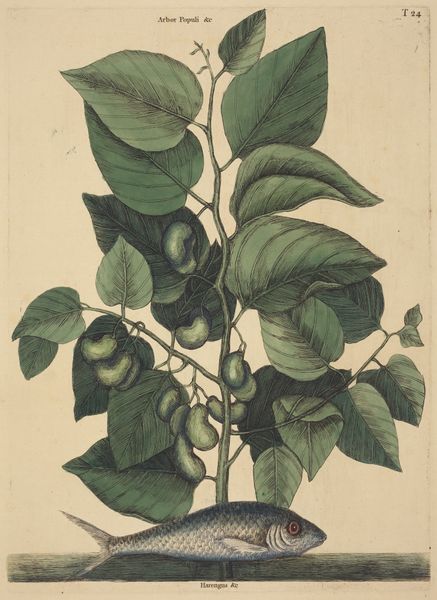
drawing, print, paper, watercolor
#
drawing
# print
#
paper
#
watercolor
#
botanical drawing
#
watercolour illustration
#
botanical art
Dimensions: 13 9/16 x 17 1/4 in. (34.45 x 43.82 cm) (image)15 15/16 x 19 3/8 in. (40.48 x 49.21 cm) (sheet)
Copyright: Public Domain
Curator: Before us, we have “Nialel,” a drawing likely made between 1678 and 1703, part of a larger compendium assembled by Hendrik Adriaan van Rheede tot Drakenstein. It combines watercolor and print on paper. Editor: The clusters of berries are so densely packed, a little ominous actually. They almost feel like… watchful eyes, punctuated by those delicate blue blossoms, like scattered thoughts around the central mass. Curator: Consider the material conditions of its production. Botanical illustrations like this one weren't simply artistic endeavors. Van Rheede was commissioned by the Dutch East India Company. Knowledge about plants, particularly medicinal ones, was crucial for trade and colonial administration. Labor was organized to render flora with utmost accuracy and that involved both local and European artisans. Editor: The different languages noted reflect a complex web of exchange. I’m drawn to how the image seems to embody a cross-cultural moment. This specific plant and artistic languages meet. "Nialel," even the title, it's layered with possible meanings, now lost in time. Curator: Indeed. The very act of recording this plant transformed it into a commodity, or potential commodity. Paper, ink, watercolors, even the artists themselves, were resources employed to further imperial ambitions. And let's not forget the networks that disseminated these images, spreading both knowledge and power. Editor: Yet, even knowing all that, I can’t help but see something almost spiritual in the precision. The image-maker carefully captured each vein of every leaf. These weren’t sterile documents, but renderings imbued with respect, wouldn’t you say? Almost as though there's a reverence for nature… a tiny hint of a secret language between the illustrator and their muse. Curator: It is easy to impose romantic interpretations in hindsight. It is important to remember this drawing, and other artistic objects from the colonial era are inherently products of extraction and exploitation, no matter how much care went into rendering a stem, or berry. Editor: A point well taken. But looking closely also allows to see that art is the enduring mark left by even unequal dialogues between civilizations, long after the trade deals are concluded, wouldn't you agree?
Comments
No comments
Be the first to comment and join the conversation on the ultimate creative platform.

